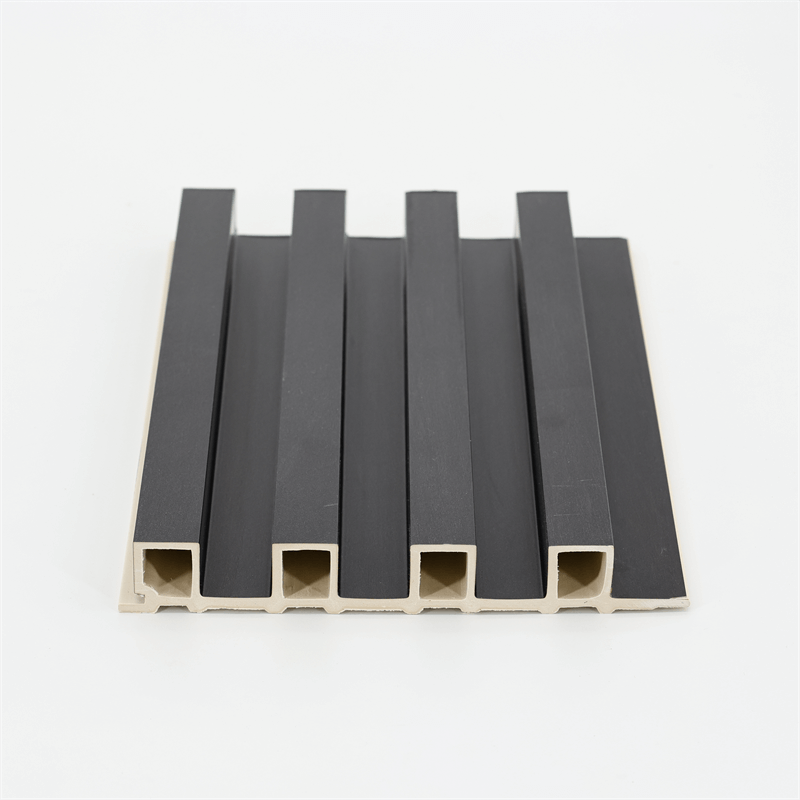In today’s world, sustainability has become a pressing concern in the field of architecture and construction.
As the environmental impact of buildings becomes increasingly evident, architects and designers are seeking innovative solutions to create sustainable and eco-friendly structures.
Wood-Plastic Composite (WPC) wall panels have emerged as a viable option, offering both aesthetic appeal and environmental benefits.
This essay explores the role of WPC wall panels in promoting sustainable practices in modern architecture, focusing on their use of renewable materials, energy efficiency, reduced carbon footprint, and recyclability.
I. Use of Renewable Materials: Promoting Resource Conservation
One of the key advantages of WPC wall panels is their utilization of renewable materials.
Unlike traditional wall finishes that rely on finite resources such as timber or stone, WPC panels are primarily made from a combination of wood fibers and recycled plastic.
The use of recycled plastic diverts waste from landfills and reduces the demand for virgin plastic production.
The integration of renewable materials in WPC panels promotes resource conservation and reduces the depletion of natural resources.
By choosing WPC wall panels, architects and designers contribute to the preservation of forests and promote sustainable practices in the construction industry.
II. Energy Efficiency: Reducing Operational Energy Consumption
Energy efficiency is a critical aspect of sustainable architecture. Buildings account for a significant portion of global energy consumption, and reducing their energy demand is crucial for mitigating climate change.
WPC wall panels contribute to energy efficiency through their insulation properties.
The composition of WPC panels, with its insulating layer, helps regulate indoor temperature by minimizing heat transfer through walls.
This reduces the reliance on heating and cooling systems, leading to lower energy consumption and decreased greenhouse gas emissions.
By using WPC wall panels, architects can design energy-efficient buildings that promote occupant comfort while minimizing the ecological footprint.
III. Reduced Carbon Footprint: Lowering Environmental Impact
The carbon footprint of a building encompasses the total greenhouse gas emissions associated with its construction, operation, and eventual disposal.
WPC wall panels offer a reduced carbon footprint compared to traditional wall finishes.
The production of WPC panels requires less energy and emits fewer greenhouse gases compared to the manufacturing processes of conventional materials.
Additionally, the use of recycled plastic in WPC panels reduces the need for energy-intensive plastic production.
By specifying WPC wall panels in architectural projects, professionals can contribute to the reduction of carbon emissions and mitigate the environmental impact of buildings.
IV. Recyclability: Closing the Loop in Material Lifecycle
The recyclability of building materials is crucial for creating a circular economy and reducing waste.
WPC wall panels are designed with recyclability in mind, providing a sustainable solution for architectural projects.
At the end of their lifecycle, WPC panels can be recycled and transformed into new products.
This closed-loop system minimizes waste generation and supports the circular economy model.
By utilizing recyclable WPC wall panels, architects and designers demonstrate their commitment to sustainable practices and contribute to the creation of a more sustainable built environment.
Sustainable architecture requires a comprehensive approach that encompasses various aspects of environmental responsibility.
WPC wall panels provide a solution that addresses multiple sustainability concerns in modern architecture.
Through their use of renewable materials, energy efficiency, reduced carbon footprint, and recyclability, WPC panels contribute to the promotion of sustainable practices in the construction industry.
By specifying WPC wall panels in architectural projects, professionals can create environmentally friendly buildings that prioritize resource conservation, energy efficiency, and waste reduction.
The integration of WPC panels aligns with the principles of sustainable architecture, allowing architects and designers to build green structures that minimize environmental impact while maintaining aesthetic appeal.

In conclusion, WPC wall panels play a significant role in promoting sustainability in modern architecture.
As the demand for eco-friendly building solutions increases, the use of renewable materials, energy-efficient design, reduced carbon footprint, and recyclability offered by WPC panels positions them as a valuable asset in sustainable construction practices.
By incorporating WPC wall panels in architectural projects, professionals can contribute to a greener future and create buildings that are not only visually striking but also environmentally responsible.
In conclusion, WPC wall panels have emerged as a sustainable solution in modern architecture, offering a balance between aesthetic appeal and environmental responsibility.
The use of renewable materials and recycled plastic in their composition promotes resource conservation and reduces the depletion of natural resources.
Additionally, the insulation properties of WPC panels contribute to energy efficiency, resulting in reduced energy consumption and lower greenhouse gas emissions.
Moreover, WPC wall panels have a reduced carbon footprint compared to traditional wall finishes, contributing to the overall sustainability of a building.
Their recyclability allows for the creation of a circular economy, minimizing waste generation and supporting the concept of material lifecycle management.
By embracing WPC wall panels in architectural projects, professionals demonstrate their commitment to sustainable practices and contribute to the creation of a more environmentally conscious built environment.
These panels offer a versatile and aesthetically pleasing solution that not only enhances the visual appeal of a structure but also aligns with the principles of sustainable design.
As the demand for sustainable architecture continues to grow, the use of WPC wall panels represents a step forward in creating buildings that are both visually striking and environmentally responsible.
By integrating these panels into architectural projects, we can work towards a future where sustainable practices are at the forefront of design and construction, creating a built environment that is in harmony with nature and promotes a greener and more sustainable world.


